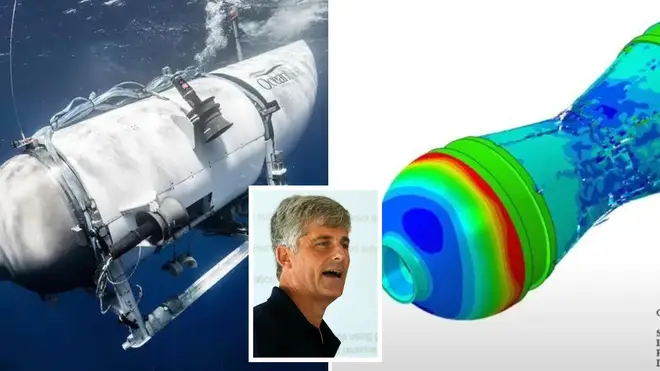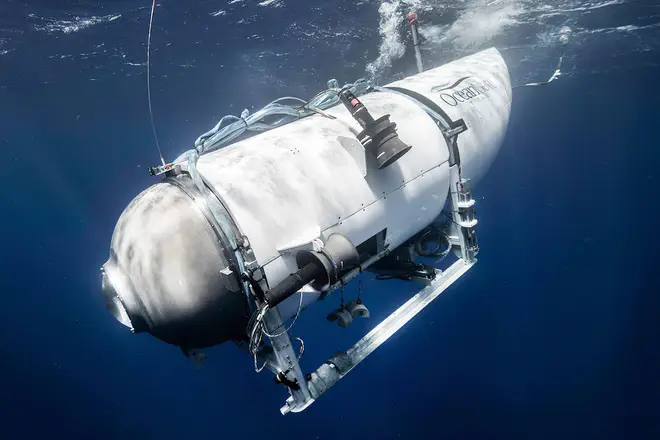
Nick Abbot 10pm - 1am
25 July 2023, 09:21 | Updated: 27 July 2023, 12:56

A simulation has shown how the Titan submersible would have imploded at each millisecond of its collapse.
Stockton Rush, the CEO of OceanGate, the company that built and operated the Titan, died on the sub alongside the four other men onboard.
Titan's disappearance on June 18 sparked a huge international rescue effort, as experts raced to find the submersible in the days before its oxygen supplies ran out.
Read more: DNA tests being carried out on human remains recovered from wreck of Titan submersible
But it later emerged that the sub had suffered a catastrophic implosion because of the massive water pressure exerted on the hull.
Now a fresh analysis has been published showing the exact time frames of Titan’s implosion in millisecond intervals.
Read More: OceanGate's Stockton Rush said 'obscenely safe' sub design never evolved due to regulation

OceanGate: Simulation of Titan Implosion in ABAQUS
Dr Ronald Wagner, an expert in the buckling of thin-walled shell structures, explained how the sub "failed" with a "collapse of the cylindrical hull."
"The steps are in milliseconds," he said. "Your brain needs 13 milliseconds to process information from your eye.
"That means that you need 13 milliseconds in order to get an image. But as you can see here, if we go forward 13 milliseconds, you would already be dead 10 milliseconds ago.
"It happens so fast and in order to process pain, it’s 100 milliseconds, so they wouldn’t really have felt anything or saw anything coming. They would just be instantly dead."

At 33 milliseconds, the middle of the cylinder collapses to half its diameter, although the Titan remains intact.
At 34 milliseconds, the cylinder has been crushed small enough to kill anyone sitting in the middle of the vessel. The hull is also breaking up.
At 35 milliseconds the middle of the sub gives way.
Analysing the simulation, Engineering.com said: "Separation of the hull and the rush of water combined with fragments of composite material would have a horrible pulverizing effect on any animal tissue, even bone. Nobody could possibly be left intact."
But loud creaks and pops, as well as alarms, would have gone off onboard ahead of the implosion.
The Titan sub lost communication with company operatives on the surface on June 18, sparking a huge search. Debris was found on the sea floor days later and rescuers said that the sub had suffered a catastrophic implosion.
The others on board were UK billionaire Hamish Harding, French explorer Paul Henry Nargeolet, Pakistani businessman Shahzada Dawood and his son, Suleman.
Following the incident, it emerged that safety concerns were raised multiple times before, with several people including Ross Kemp and YouTuber Mr Beast having dropped out of doing similar trips.
As the Titanic wreckage is in international waters and the OceanGate expeditions were not operating out of a port, the trips were not subject to safety regulations.